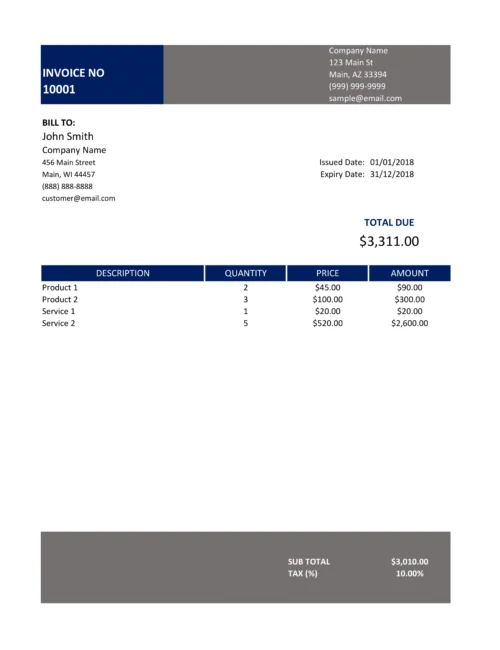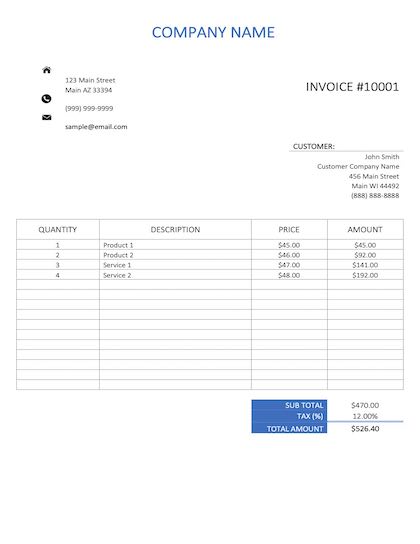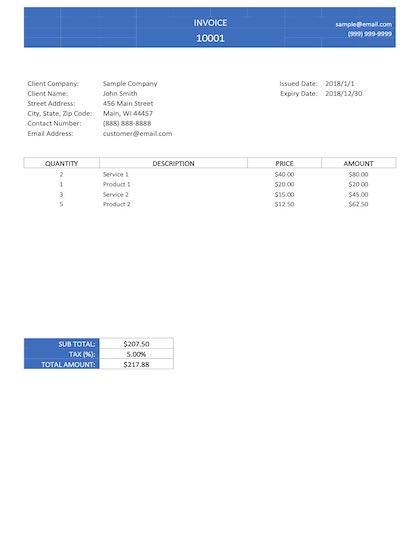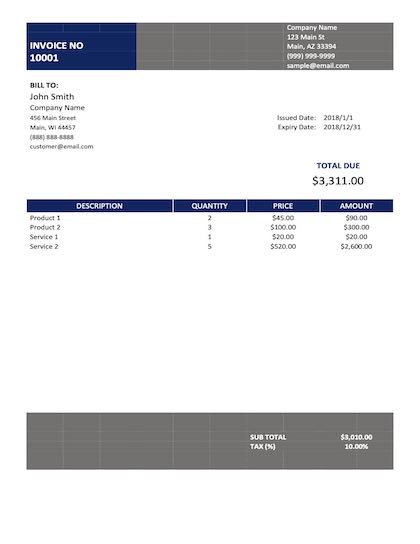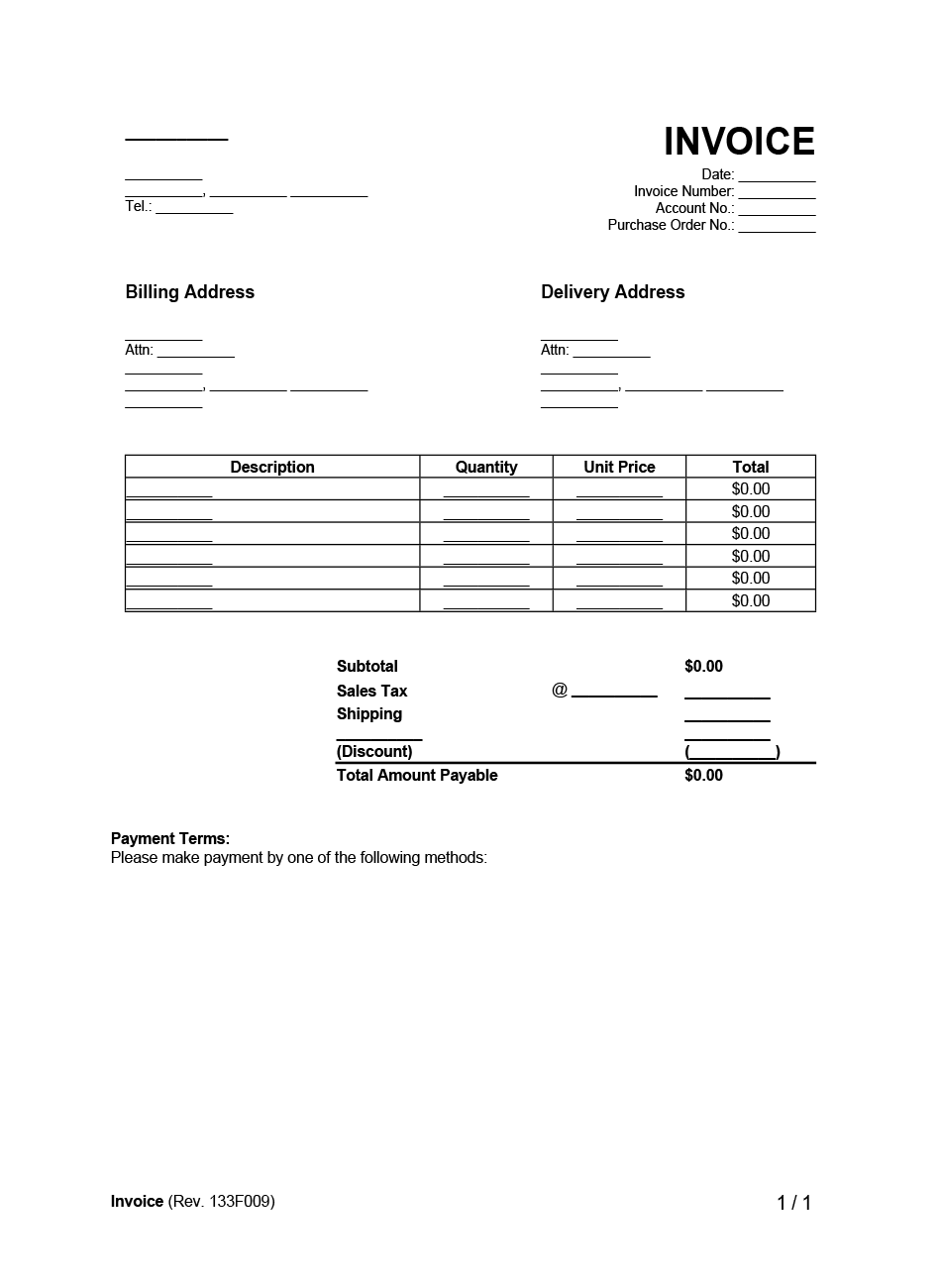What Is an Invoice?
An invoice is a formal document you send to clients detailing the services you provided and the amount they owe for them. Invoices help you organize your finances and have a transparent, professional relationship with your clients. Here’s why you need one:
- Allows you to provide goods or services for payment
- Creates a record of your transactions for accounting and legal purposes
- Helps promote timely payments from clients
- Manages one-off services or recurring payments
How Do Invoices Work?
Invoices are a key part of the sales process. The seller creates one after they provide goods or services to a client. When writing it, they ensure to include the following details:
- An itemized list of what was provided
- The cost of the goods or services
- A payment due date
Then, the buyer reviews the invoice to ensure it reflects what was offered. Upon reviewing for accuracy, the buyer pays the invoice according to the outlined payment methods. The seller receives payment and confirms that the invoice has been settled properly.
Purpose of an Invoice
An invoice serves as a payment request and a record of the transaction that took place between the seller and buyer. Without an invoice, confusion, disputes, or delays can occur, costing both parties time and money.
Types of Invoices
The invoice you use will depend on what you’re charging for. Explore our invoice templates by category to find the one that works for your situation.
Invoices for Professional & Personal Services
Use these templates to maintain professionalism and collect payment for specialized services, such as consulting, dental care, freelance projects, or legal work.
Sent by freelancers to request payment for creative or technical work, such as writing, design, or programming
Freelance
Invoices for Home & Property Services
Explore these templates to easily bill clients for repairs or improvement projects around the home or property.
Invoices for Events & Creative Services
Use these templates to bill for services provided at weddings, parties, and other special occasions—perfect for DJs, caterers, and photographers.
Invoices for General Services & Trades
Use this template to bill for a wide range of service or labor tasks when no specialized invoice fits your work.
How to Write an Invoice
Ensure you fill out your invoice correctly to communicate the owed charges and encourage timely payments. Writing your invoice is simple with our professional template. Here’s how you can effortlessly create high-quality invoices.
Step 1 – Provide Invoice Details
Start by recording the initial invoice details. Write the invoice date and assign an invoice number for easy tracking. If applicable, you can include the following details:
- Customer’s account number: Identifies the customer’s account in your billing system.
- Purchase order number: Links the invoice to a customer’s official purchase request.
Including these numbers can make your invoice clearer and ensure payments and records are applied correctly. If you don’t have these numbers, you can write “not applicable” in their designated spots.
Step 2 – Add Customer Information
Write the customer’s billing information, including their company or individual name, address, and contact information. Specify whether you will include a specific contact person.
Also, record their shipping information if it’s different from their billing information. This is essential if you’re mailing the goods they’re paying for.
Step 3 – Write Seller Information
Record your information as the seller. Include your name, address, and telephone number. You can also include optional details, like your email address and fax number.
Step 4 – Record the Transaction & Payment Details
Record the transaction that took place between you and the buyer. If you exchanged goods, describe them and report the quantity and unit price. If you provided services, explain what you did and how much your labor costs. Ensure to include other details as needed, such as:
- Sales tax
- Shipping charges
- Discounts
- Miscellaneous charges
Explain what payment methods you accept, such as cash, credit cards, checks, money orders, or PayPal. This way, clients will know how to pay you and what methods to avoid. If clients need to pay their debt over time, you can set up a payment plan agreement.
Step 5 – Finalize Details
Finalize your invoice by including additional comments or instructions. For example, you can include the following details:
- Shipping dates
- Late payment penalties or fees
- Thank-you notes or appreciation messages
- Detailed instructions for submitting payment
- Notes about credits or adjustments
Creating Multiple Invoices
If you transact with multiple clients, you’ll likely have to create multiple invoices. Instead of starting from scratch, you can copy an existing invoice and replace the specific information as needed. When you use Legal Templates’ form, you can easily keep your billing process consistent.
Sample Invoice
View our sample invoice below to see what an invoice looks like. Then, create your own using our guided form. Download your final invoice in PDF or Word format.
How to Send an Invoice
Once you create an invoice, you can send it to your client to collect payment. The most common way to send an invoice is via email. Obtain their most current email address and prepare an email with a:
- Clear subject line
- Concise message explaining the amount owed
- Invoice attachment as a PDF or Word document
If you or the client prefers, you can print out your invoice and mail a physical copy.
A well-sent invoice ensures the client understands their payment obligations.
Whichever method you choose, ensure to follow up if the client doesn’t respond. You may send a gentle reminder or a demand for payment letter if the due date passes without action from the client.
Invoice vs. Receipt vs. Purchase Order
Understand the differences between an invoice, a receipt, and a purchase order by learning the order in which they appear during the sales process:
- Purchase order: Outlines the desired goods or services (the buyer issues it to the seller).
- Invoice: Requests payment from the client (the seller issues it to the buyer).
- Receipt: Provides proof of payment (the seller issues it to the buyer).





